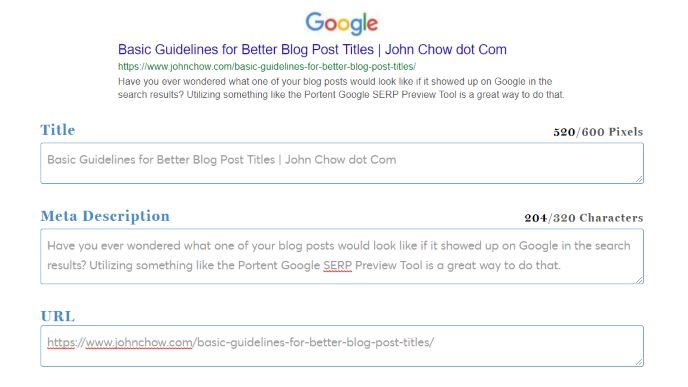The nature of writing and publishing content on the Internet is such that you will always be balancing two priorities. On the one hand, you want to make sure you are writing content for actual human beings. You want your blog posts to be useful, engaging, or entertaining in some way for your readers. Otherwise, it’s all just fluff and you won’t last. On the other hand, you also need to please the algorithms, from search engines to social media platforms. Everything needs to be SEO-friendly so you have the chance at capturing the attention of a human being, right?
And as much as we like to say that you shouldn’t judge a book by its cover, everyone does. All the time. That’s just a fact of life, and when it comes to your blog posts, the “cover” consists first of your blog post title (or “headline”). Depending on circumstances, it might also include your featured image (like when your post gets shared on Facebook) or a meta description (like when your post shows up on a search engine results page). But the post title will always be highlighted… so, how do you come up with a good one? What are some of the most important characteristics to keep in mind?
The Ideal Post Title Length
Let’s start with character count. A blog post title that’s too short doesn’t convey enough information, both for the search engine spiders and for potential readers. If the title to this article was simply “Basic Guidelines,” it’d be virtually meaningless. Similarly, if the title was “Post Titles,” you still wouldn’t know what it’s about.
Another consideration is how much of the title would actually appear on a search engine results page. If the title is too long, it’s going to get cut off. The same is true with many social media shares too. To this end, the recommended title length is between 55 and 60 characters. You can count them up manually, of course, or utilize any number of online word and character count tools to do that for you. Remember that spaces and punctuation count as characters.

Primary and Secondary Keywords
You will also want to be mindful about how you choose to format your blog post title. While you should place the needs of the reader above the needs of the search engines, giving the search engines a better sense of what the article is about will always be in your favor too. The days of keyword stuffing may be behind us, but keywords still play a critical role in online content.
Where possible, you will want to have your primary keyword as close to the beginning of the title as possible. This can then be followed by your secondary keyword (if you have one). For the title attribute on your site, the format would generally involve some sort of punctuation separator (like a dash or vertical bar), followed by the name of your site or blog. These aren’t hard and fast rules, but they are something you want to keep in mind.
Blog Headlines vs. Title Attributes
Something that is also worth mentioning is that the headline that you have at the top of your article does not necessarily have to be identical to the title that appears on the search engine results page or in the web browser tab. That’s the difference between your post title and the title attribute. Depending on how your blog is set up, you can usually set these independently if you have a strategic reason for doing so.
Leveraging the SERP Preview
Have you ever wondered what one of your blog posts would look like if it showed up on Google in the search results? Utilizing something like the Portent Google SERP Preview Tool is a great way to do that. All you have to do is enter the title, meta description, and URL (along with bolded keywords, if you’d like), and the utility will generate what that page would look like in a Google search result.

This is really handy not only for tweaking your post title, but also the length and content of your meta descriptions. Depending on the content, you can even ask the Portent tool to show the rich snippet, which would include such information as ratings and price. There’s also a toggle to add the date, which increases the length of the meta description.
It’s Not Clickbait
Here are 23 Incredible Celebrity Scandals That’ll Blow Your Mind, #16 Really Changed Everything! Do you hate headlines like that? Many “viral” websites use them, because they have a positive effect on click-thru rates. That’s why they’re called clickbait. And before we demonize the practice, there’s something to remember. It’s not clickbait if the title is actually representative of the content inside. If that title was used on an article that didn’t really have any juicy celebrity scandals, then that’d be a bad use of “clickbait.”
However, if you can come up with an enticing title that really does give readers an accurate glimpse into what they can expect, then that’s just good copywriting. Further to that point, you might try the Emotional Marketing Value Headline Analyzer from the Advanced Marketing Institute. This can give you a better sense of whether your post title is intellectual, empathetic or spiritual.
